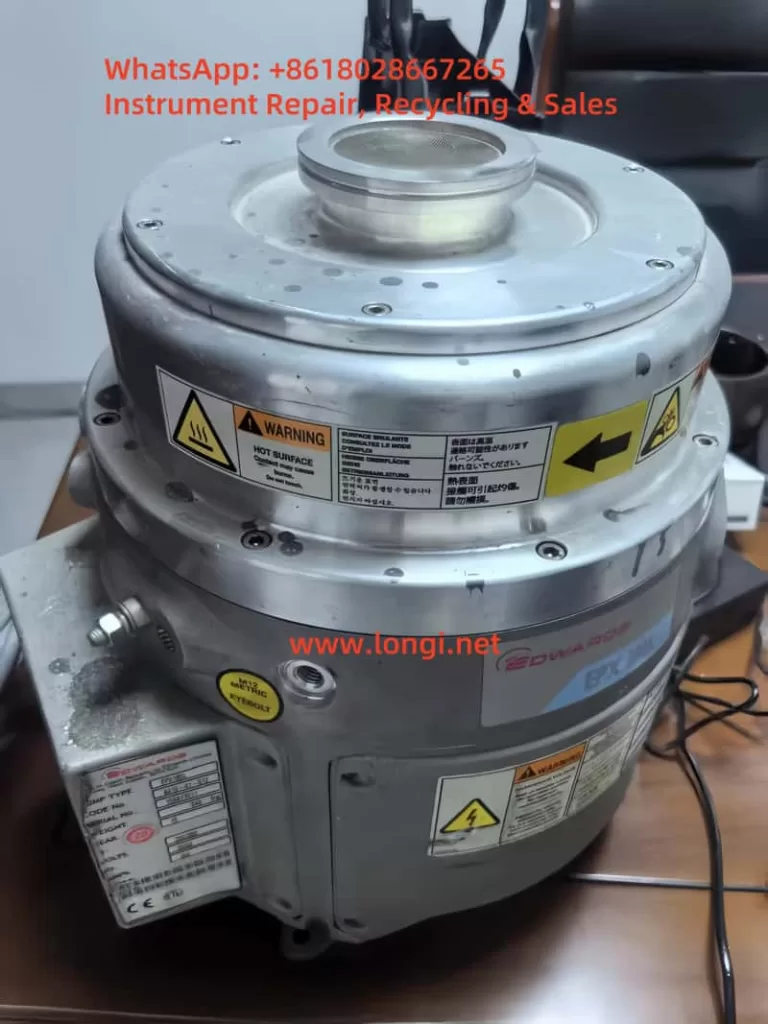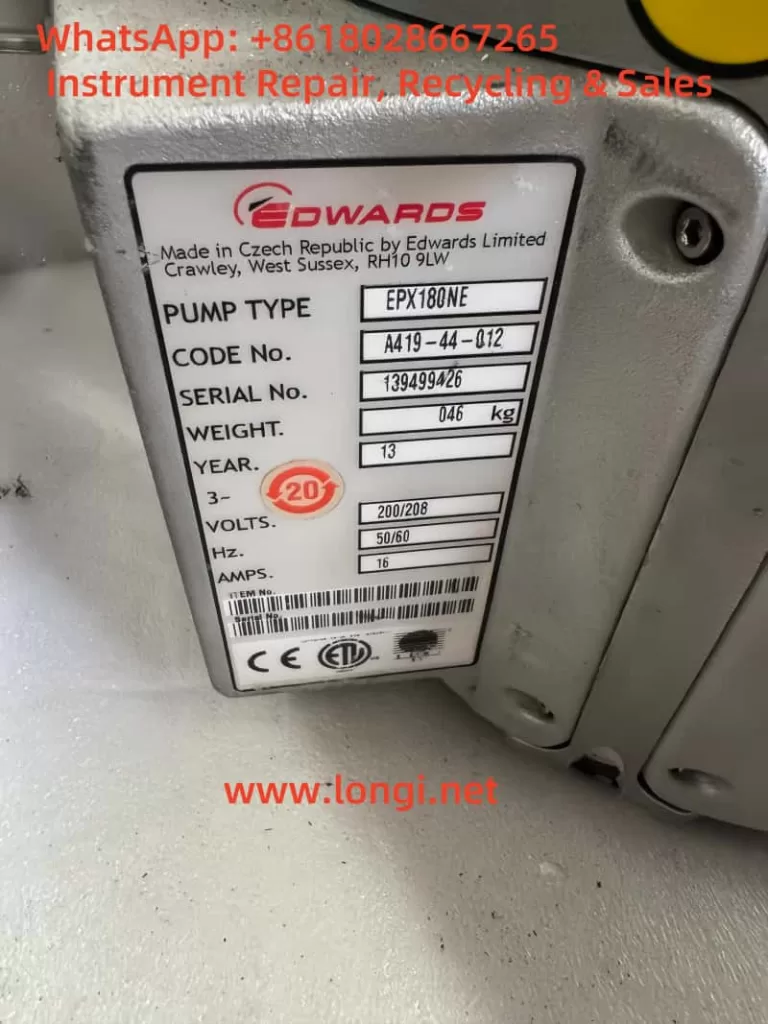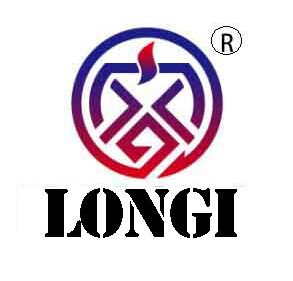Introduction
Edwards, a global leader in vacuum technology, offers the EPX series vacuum pumps, renowned for their innovative design and exceptional performance. The EPX series is a high-vacuum primary pump that integrates regenerative and Holweck stage mechanisms, enabling efficient pumping from atmospheric pressure to ultimate vacuums as low as 1 x 10^-4 mbar or 1 x 10^-5 mbar, depending on the model. This design eliminates the need for additional turbomolecular pumps in many applications, simplifying system setups.

Widely used in industries such as semiconductor manufacturing, vacuum coating, analytical instrumentation, pharmaceuticals, and optoelectronics, the EPX series excels in high-vacuum, high-cleanliness, and high-reliability applications. This guide provides a comprehensive overview of the EPX series’ performance features, applications, operational procedures, usage details, and troubleshooting methods to assist users in maximizing the pump’s potential.
1. Performance Features
The EPX series vacuum pumps are engineered for superior performance in high-vacuum environments. Below are the key technical specifications:
| Parameter | EPX180LE | EPX180NE | EPX500LE | EPX500NE |
|---|---|---|---|---|
| Peak Pumping Speed (m³/h) | 175 | 175 | 500 | 500 |
| Ultimate Vacuum (mbar) | <1 x 10^-4 | <1 x 10^-4 | <1 x 10^-5 | <1 x 10^-5 |
| Max Exhaust Pressure (bar) | 0.2 | 0.2 | 0 | 0 |
| Nitrogen Consumption (slm) | 0 | 25 | 0 | 25 |
| Cooling Water Consumption (l/h) | 120 | 120 | 120 | 120 |
| Supply Voltage (V) | 200/208/400 | 200/208/400 | 200/208/400 | 200/208/400 |
| Power at Ultimate (kW) | 1.4 | 1.6 | 1.4 | 1.6 |
| Maximum Power (kW) | 3.0 | 3.0 | 3.0 | 3.0 |
| Weight (kg) | 45 | 47 | 46 | 48 |
| Inlet/Outlet Connection | ISO63/NW25 | ISO63/NW25 | ISO160/NW25 | ISO160/NW25 |
| Noise (dB(A)) | <56 | <56 | <56 | <56 |
| Vibration (mm/s, rms) | <1.3 | <1.3 | <1.3 | <1.3 |
- Pumping Speed and Vacuum: The EPX180 delivers a pumping speed of 175 m³/h, while the EPX500 achieves 500 m³/h. All models reach <1 x 10^-4 mbar, with the EPX500 capable of 1 x 10^-5 mbar due to an additional helical rotor stage.
- Cooling System: Water cooling ensures a low environmental heat load, ideal for cleanroom settings.
- Cleanliness: The oil- and grease-free mechanism prevents contamination, suitable for high-purity processes.
- Nitrogen Purge: N variants (EPX180NE and EPX500NE) include a nitrogen purge facility for handling vapors and low-level corrosive gases and particulates.
- Compact Design: Weighing approximately 45-48 kg, the EPX is smaller than equivalent turbomolecular pump and primary pump combinations.
- Low Noise and Vibration: Noise levels below 56 dB(A) and inlet flange vibration under 1.3 mm/s ensure suitability for quiet environments.
- Power Efficiency: Supports 200/208/400 V three-phase power, with power consumption of 1.4-1.6 kW at ultimate vacuum and a maximum of 3.0 kW.
These features position the EPX series as a high-performance solution for demanding vacuum applications.
2. Applications
The EPX series vacuum pumps are designed for a variety of high-demand applications, including:
- High-Vacuum Processes: Ideal for applications requiring higher vacuum levels than typical primary pumps, such as semiconductor load locks, vacuum coating, and analytical instruments, where it can replace turbomolecular and primary pump combinations, reducing system complexity and cost.
- Frequent Pressure Cycling: Suitable for processes that cycle frequently between atmospheric and low pressures, such as load locks and rapid-cycle coating systems.
- High-Cleanliness Requirements: The oil-free design makes it perfect for pharmaceuticals, electronics, and optoelectronics, ensuring contamination-free systems.
- Corrosive Gas Handling: The nitrogen purge facility in N variants enables handling of vapors and low-level corrosive gases, suitable for light-duty corrosive processes.
The EPX series’ versatility and efficiency make it a preferred choice in semiconductor, scientific research, and industrial production settings.
3. Operational Procedures
Proper operation of the EPX series vacuum pump is critical to ensuring performance and safety. Below are the detailed steps for operation:
3.1 Preparation and Installation
- Installation Location: Install the pump in the vacuum system before connecting to the electrical supply to prevent accidental operation during setup, which could cause injury or equipment damage.
- Inlet Protection: Do not remove the inlet screen or operate the pump with the inlet exposed. If hazardous substances are involved, isolate the pump from the atmosphere and process system.
- Piping Connections: Connect the pump inlet to the process system using flexible connections to minimize vibration and stress. Use short pipes with an inner diameter no smaller than the pump inlet. Remove the inlet flange protective cap before installation and use an Edwards centering O-ring and claw clamps to seal the connection.
3.2 Connections
- Cooling Water: Connect the cooling water supply and return lines via customer-specified water connectors (refer to Figure 2, items 4 and 9). Ensure cooling water meets environmental conditions (humidity and temperature, refer to Table 5).
- Power Supply: Connect the electrical supply through a suitable fuse/isolator, ensuring proper grounding via the protective earth stud (Figure 2, item 3) in compliance with local electrical codes.
- Control Interface: Connect external control equipment via the Tool Interface Module (TIM) or End User Controller (EUC). The EPX L, N, and NE series use the EUC for local and network control, while the EPX E series supports manual operation via EUC or PDT.
3.3 Starting the Pump
- Use the run button on the EUC (Figure 7, item 1) to start the pump. The run LED (green) illuminates when the pump is operating normally.
- For EPX N series pumps, supply nitrogen purge gas through a 1/4-inch compression fitting labeled “N2 Inlet” using 1/4-inch OD tubing, ensuring stable flow (refer to Table 10).
3.4 Monitoring and Control
- Status Monitoring: Monitor pump status via front panel LEDs (refer to Table 1 and Figure 4):
- Power LED (Green): Indicates main power supply is active.
- Run LED (Green): Steady when running, flashing in idle mode.
- Warning LED (Amber, EPX N only): Indicates low nitrogen flow.
- Alarm LED (Red): Indicates shutdown due to a fault.
- Control Options: Use the EUC or PDT menus (Normal, Status, Control, Setup) to check status, adjust controls, and configure parameters. The EUC display provides two-line, 16-character pump status information.
3.5 Stopping the Pump
- Use the stop button on the EUC (Figure 7, item 10) to stop the pump.
- In emergencies, connect to an emergency stop circuit to disconnect power immediately, requiring a separate start or reset action.
Precautions
- Ensure proper grounding to prevent electrical hazards.
- Verify cooling water supply meets requirements to avoid overheating.
- For EPX N series, regularly confirm the nitrogen purge system is functioning correctly.
4. Usage Details
The EPX series vacuum pumps offer detailed operational features covering their operating range, variant functionalities, and protective mechanisms:
- Operating Range: The pumps operate from atmospheric pressure to ultimate vacuum without lubricating or sealing fluids in the pumping chamber, ensuring a clean system with no oil back-migration.
- Variants and Applications:
- EPX L: Designed for clean tasks (e.g., load locks), supports local and network control via EUC.
- EPX N: Equipped with a gas module for nitrogen purging, suitable for light-duty applications with diluted process gases.
- EPX NE: Light-duty application pump with network and local control.
- EPX E: Supports manual operation via EUC or PDT, ideal for network-controlled setups.
- Capacity and Configuration: Available in 180 m³/h (EPX180LE/NE) and 500 m³/h (EPX500LE/NE) capacities, with voltage options of 200/208 V or 400 V, and water connector options of 1/4, 3/8, or 9/16-inch BSP or no quick connects.
- Cooling System: Integrated water cooling circuit suits cleanroom environments, avoiding the drawbacks of fan cooling.
- Performance Optimization: The EPX Twin offers enhanced performance between 1 bar and 0.2 mbar, ideal for load locks and rapid cycling applications.
- Protective Mechanisms: Equipped with sensors like thermal cut-off switches to detect overheating and trigger automatic shutdowns. The EPX N series includes a nitrogen purge flow switch (set to 12 slm) to monitor flow.

5. Troubleshooting
Below are common issues with the EPX series vacuum pumps and their solutions:
| Issue | Possible Cause | Solution |
|---|---|---|
| Pump Shutdown (Alarm LED On) | Overheating, drive fault | Cool the pump for at least 20 minutes, check cooling water supply (Section 2.4), restart. |
| Low Nitrogen Flow (Warning LED On) | Insufficient nitrogen supply | Verify nitrogen flow to the gas module; if persistent, contact Edwards service center. |
| Noise on Restart | Rapid reapplication of run signal | Allow the pump to fully stop before reapplying the run signal; noise is harmless. |
| Connection Issues | Incorrect control equipment connections | Verify interface connections (Section 3.11); if persistent, contact Edwards service center. |
Safety and Maintenance
- Electrical Safety: Do not operate without proper grounding or correct electrical connections. The pump contains no user-serviceable parts; maintenance must be performed by Edwards professionals, with power disconnected for at least 4 minutes before removing covers.
- Pump Seizure: If the pump seizes, wear gloves, eye protection, and a face mask due to potential aluminum sulfate dust and sulfurous odors.
- Service Support: Contact Edwards service centers for repairs, spares, or accessories, providing model, serial number, and part details. Returns require a completed HS2 contamination form.
6. Conclusion
The Edwards EPX series vacuum pumps offer outstanding performance, versatility, and reliability for high-vacuum applications. Their oil-free design, high pumping speeds, and nitrogen purge capabilities make them ideal for semiconductor, pharmaceutical, and research industries. By following proper operational procedures, regular monitoring, and timely maintenance.
